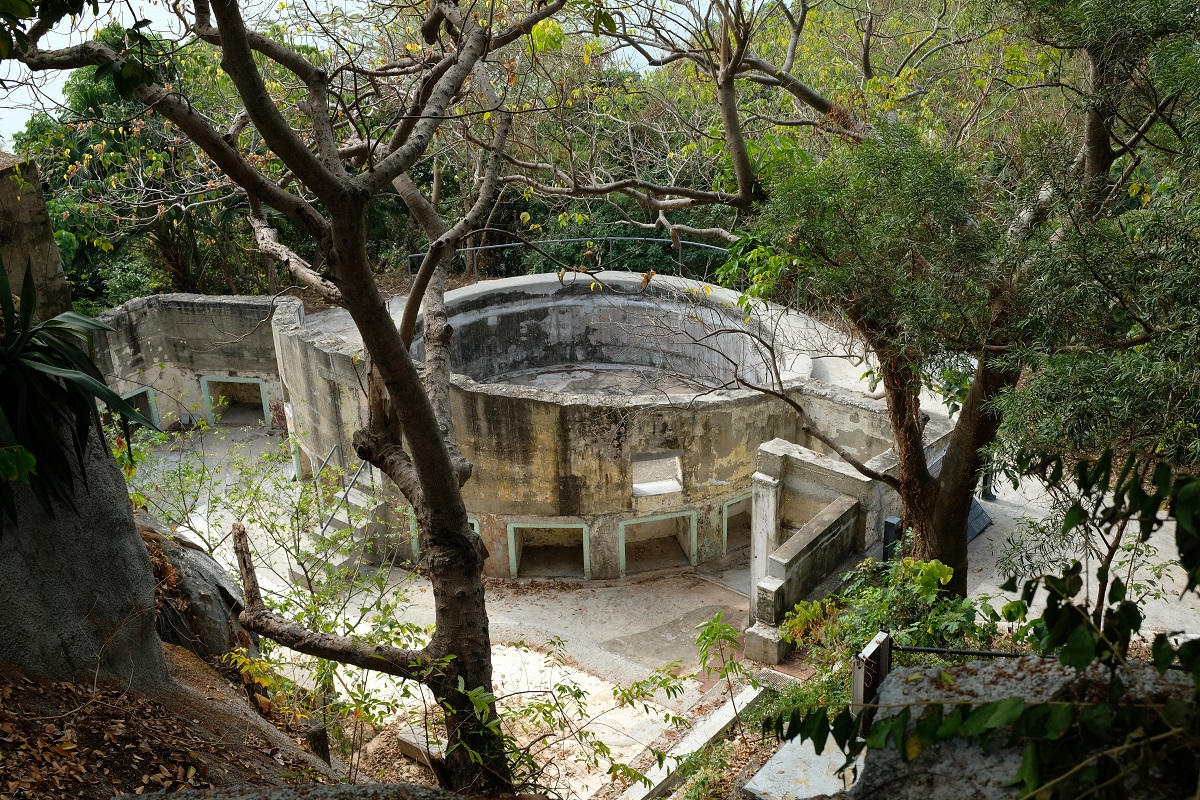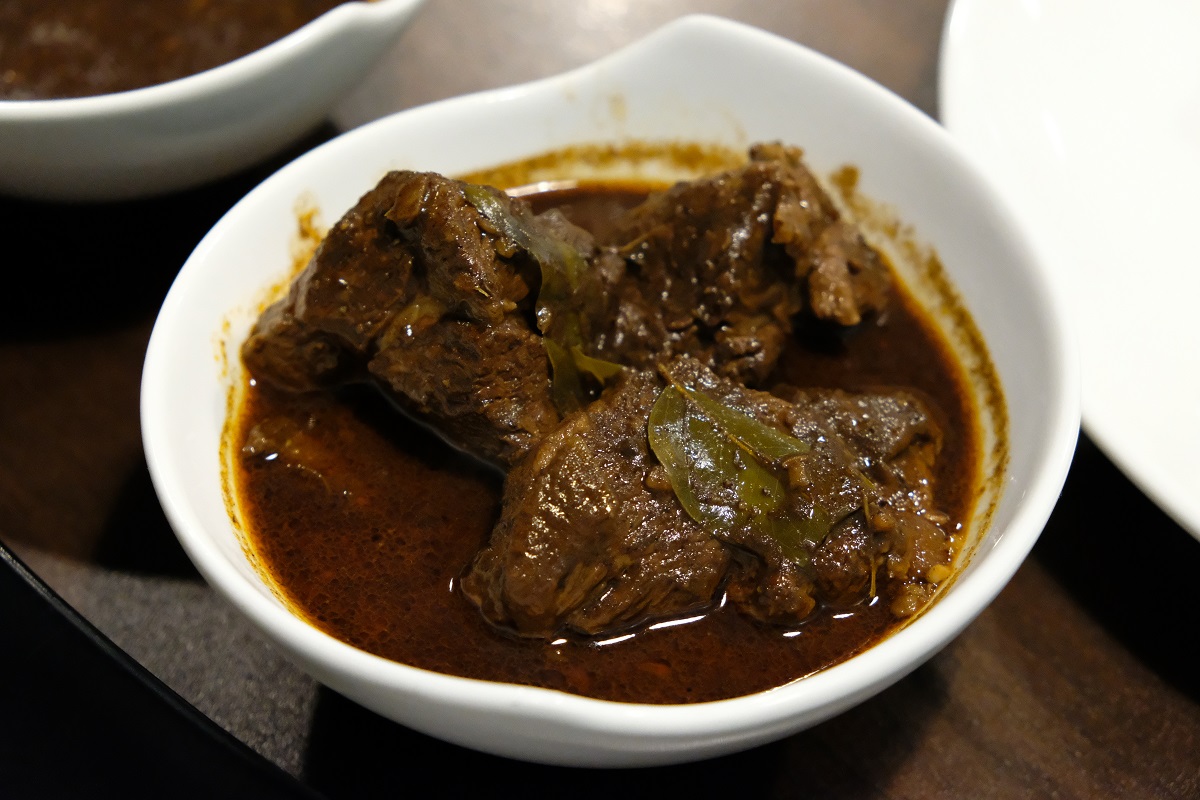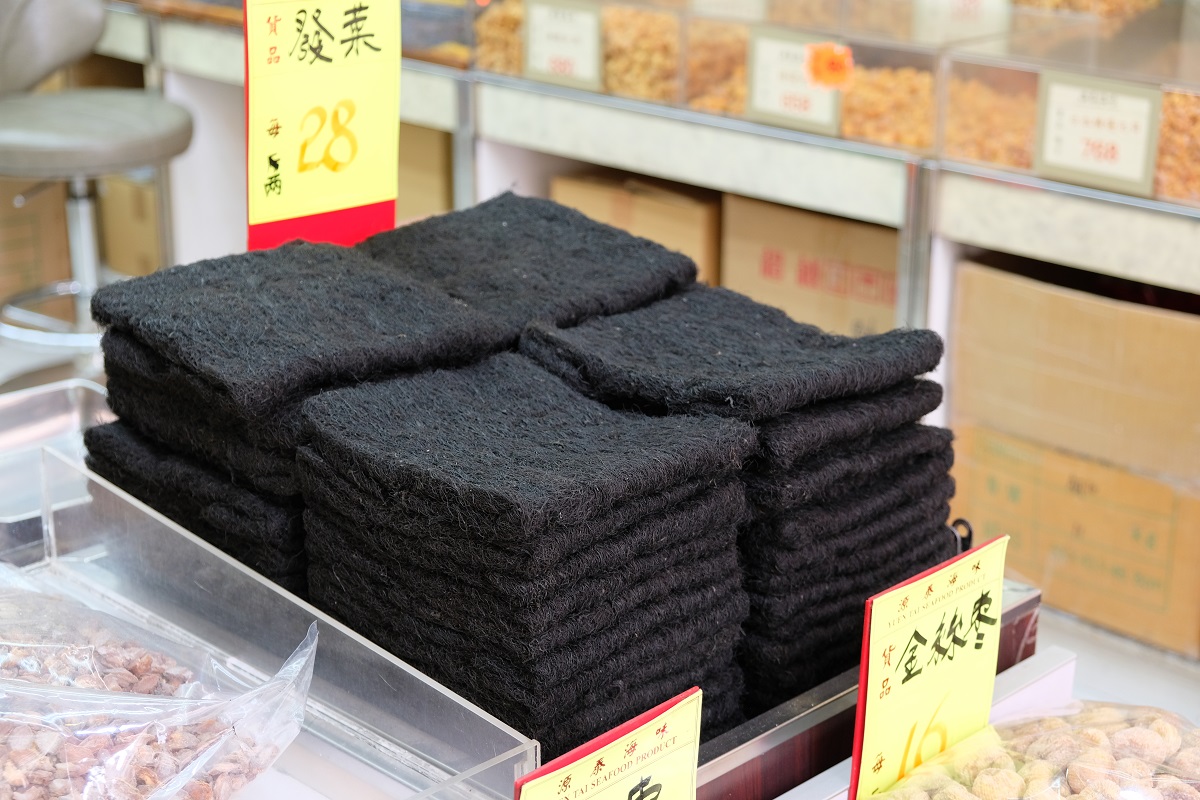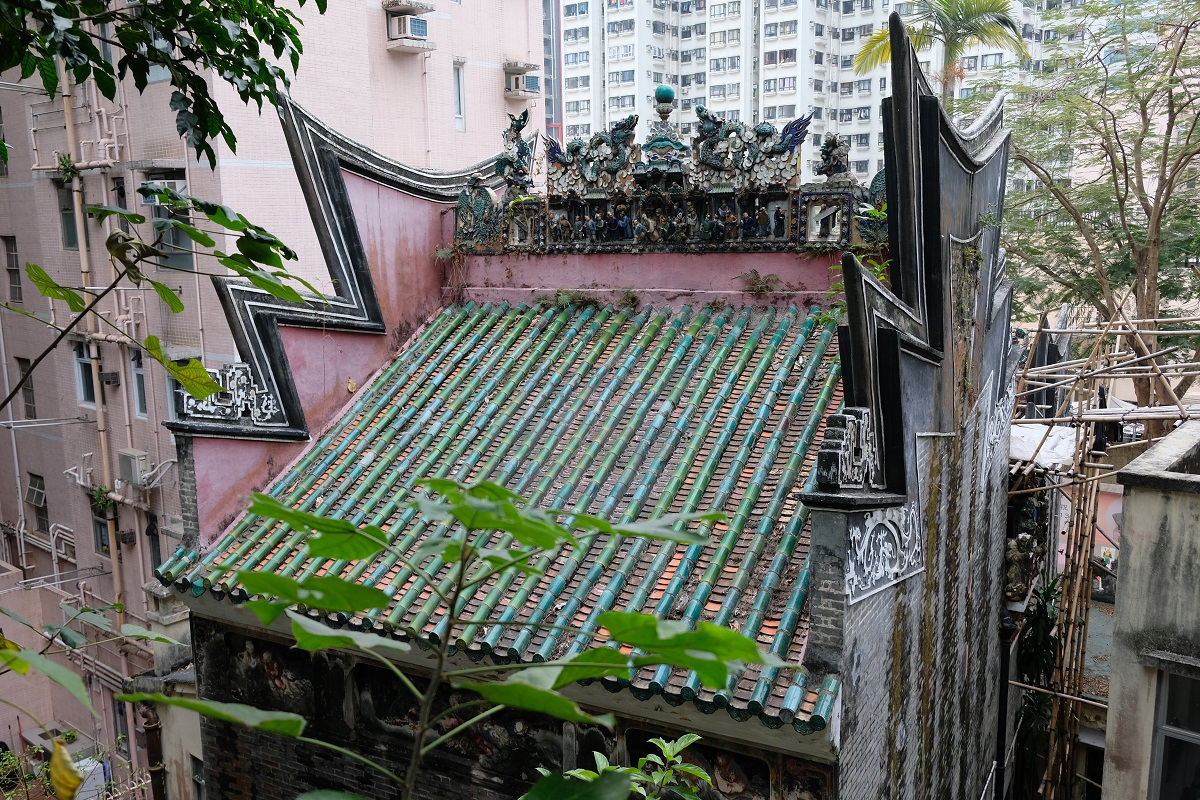Hong Kong has always fascinated me since my first trip to the city back in January 2012, and since then I have returned five more times, with the most recent visit being in December 2019. I always tell people how Hong Kong’s hiking trails, white sand beaches, vast metro network (the MTR), tranquil small islands, skyscraper-studded skyline and cultural scene (which includes its mouth-watering dishes) are among the reasons why I keep going back. However, it was only a few weeks ago when it suddenly crossed my mind what Hong Kong actually is, and how to better describe it to those who have never set foot there.
Hybridism seems to have been and will always be (at least for the foreseeable future) in Hong Kong’s DNA. At first, this is evident in the things we can immediately see: modern high-rise buildings and traditional shops, a highly urbanized city and great outdoor escapes, ultra-efficient MTR trains and the slow but atmospheric Star Ferry. In case you didn’t notice, I don’t use the word ‘versus’ to contradict these things because they simply coexist, oftentimes complementing each other. And if we peel off the outer, superficial layer of Hong Kong, we’ll see how hybridism also occurs in much deeper and more profound aspects of people’s lives.
Despite its well-connectedness to many parts of the world, its society is still largely bound by traditional values. And although capitalism is very much the foundation of Hong Kong’s modern economy, subversive ideas have been very much tolerated, until recently when this territory was forced to adapt to a new form of hybridism: one that combines a supposed respect for civil liberties with a more authoritarian style of governing the people. Recent trends show how Hong Kong has been leaning more and more toward the latter which eventually will make it like other cities in mainland China.
In my latest visit to Hong Kong, Pok Fu Lam and Sai Ying Pun in the western part of Hong Kong Island were among the places I explored in the territory. I have to admit, having James navigate through the city to find our way to the places we wanted to see has helped me to enjoy Hong Kong immensely more than I would have if I was traveling by myself. While both areas were rather unassuming – by Hong Kong standards – it was only recently that I realized that together they are a good example of hybridism in this city. In Pok Fu Lam, we went to the Hong Kong campus of the University of Chicago which occupies a low-rise glass building with smooth curves that give it an unmistakably modern look. Below this façade, however, are remnants of Jubilee Battery which formed Hong Kong’s eastern coastal defense system when it was still a British colony. Old and new, past and future.
In Sai Ying Pun, evidence of Hong Kong’s hybridism pervaded the air. From the typical downtown street scene where shops selling traditional food ingredients sit right underneath towering apartments and office buildings, to a Ding Ding (Hong Kong’s iconic double-decker tram) painted in Dior’s patterns that passed another one with a plain white exterior bearing words promoting Bansky’s exhibition in the city. Luxury and subversion.

String hoppers at Serendib, a Sri Lankan restaurant in Sheung Wan, the neighborhood next door to Sai Ying Pun

Gotukola sambol, a Sri Lankan-style salad made from pennywort, coconut, shallots and other ingredients
On Yu Lok Lane, four two-story structures stood out amid their vertical neighbors. A handsomely restored collection of former Chinese tenement buildings from the early 20th century, this is among the many projects carried out by Hong Kong’s Urban Renewal Authority (URA) whose mission is to address urban decay and improve the living conditions of residents in the city’s old districts. James himself took part in this particular project as an intern during one summer break when he was still an architecture student. “I made the computer model of these buildings using AutoCAD,” he recalled while making a reference to the software application which I also learned briefly in my university years.
While those examples based on my observation are part of the reasons why Hong Kong is such an intriguing and endlessly charming place to explore, a new kind of hybridism has been emerging in recent years as I mentioned earlier. Almost everything you read or hear on the news about this city lately points out to the fact that Beijing-style authoritarianism has been creeping into the lives of Hong Kong residents. My visit at the end of last year happened only a few weeks after the months-long protests that rocked this territory had started to die down. But in many places across the city, expressions of people’s (especially the youth) frustration toward their government were still visible. A sign for disabled people to access the MTR that I saw not far from the University of Hong Kong’s campus was doodled with a depiction of police brutality toward a masked protester. It’s one of many reminders of the duality of residents’ feelings regarding what has been happening to their hometown: hope and despair.
In retrospect, when the bauhinia flower was chosen to adorn the new flag of Hong Kong upon its handover to China from the United Kingdom, it was at the same time very much symbolic of what the territory would become – although the flower had in fact been used as the emblem of the city’s municipal council when it was still a British colony. The purple-colored bauhinia blooms, which were first discovered in Pok Fu Lam in the late 19th century, can be found throughout Hong Kong, especially during the winter. Its blossoms emanate a subtle sweet fragrance (as I learned myself upon sniffing on them underneath UChicago’s campus) which can be detected only when you put your nose very close to them. However, this bauhinia plant is actually a hybrid – probably a naturally-occurring one – whose scientific name is Bauhinia x blakeana, after Henry Blake, British governor of Hong Kong from 1898 to 1903. Choosing a hybrid plant as the emblem of a territory? It certainly suggests a profound philosophical question about Hong Kong’s place in China in the future.
Ideally, a hybrid carries the best of both worlds of its parentage. But when a hybrid is forcefully exposed and consistently fed with the genes of just one side of the parent, will it eventually become a species that is no different from that parent? Only time will tell.
































What a wonderful write-up of the essence of Hong Kong, Bama. I love how you point out that the old and the new, the past and the present, etc don’t have to stand in juxtaposition, but can coexist harmoniously.
The first photograph is my favourite – so striking!
LikeLiked by 3 people
Thank you, Jolandi. For many years this kind of “harmonious” coexistence has been the norm in Hong Kong — most people are more on the pragmatic side of things. But the recent developments have been quite worrying to be honest.
LikeLiked by 1 person
It would really be a pity if that coexistence is shattered, so I can understand your concern, Bama. It is very disconcerting when things change for the worse.
LikeLiked by 2 people
I love Hong Kong.. I wish I could go back there soon. 🙂 Nice writing.
LikeLiked by 1 person
Thank you, Jennifer. Usually I would go to Hong Kong every Christmas, but this year is an exception. I hope the pandemic is over soon, so we can travel again.
LikeLiked by 1 person
Wow good to know. My daughter and I too always spends Christmas Holiday in Hong Kong until New Year.. Sadly not this year. 😦 Keep safe.. Yes, hope this pandemic ends so we could travel soon. 🙂
LikeLiked by 1 person
Hong Kong is in my heart. Thank you for sharing these details and taking me the reader back.
LikeLiked by 2 people
The pleasure is mine, Kalomira. Thank you for reading.
LikeLiked by 1 person
Great post Bama.
LikeLiked by 2 people
Thanks John and Susan! I hope you both stay safe and healthy.
LikeLiked by 1 person
This is a great perspective on Hong Kong. I find these contradictions in other places in Asia, beggars in India carrying mobile phones comes to mind. But you’re right, Hong Kong takes it to another level and rather than contrast, they compliment each other.
LikeLiked by 1 person
That reminds me of some Buddhist monks in Myanmar who were busy with their mobile phones at an old monastery, and it was not too long since the country reopened itself to the world after decades of isolation. Hong Kong, on the other hand, has always been open to the world.
LikeLiked by 1 person
Haha, ya we saw similar scenes, very contradictory.
LikeLiked by 1 person
Fat choy! Haven’t eaten that in a year. I’ll dream of it all night
LikeLiked by 1 person
Oh so you really liked it. I remember having it a few times in Hong Kong, and I quite enjoyed its texture.
LikeLike
A beautiful series of photos showing daily life rather than listing the monuments, it is a vision of the cities that it is also interesting to show. Thanks for the post.
LikeLiked by 1 person
The thing with Hong Kong is, unlike other places in Asia, it doesn’t really have magnificent, centuries-old monuments. But to truly enjoy this city, one has to allow him/herself to be exposed to different things it has to offer. Thank you for reading.
LikeLiked by 1 person
Bama, we haven’t been to Hong Kong in some time, but my memories are exactly as you say: the juxtaposition of marked contrasts of all types. I’m also interested to hear your descriptions of the authoritarian influence creeping in from the mainland. It was obvious that this would happen at some point, but hopefully the transition will preserve some of what made HK so unique. ~James
LikeLiked by 1 person
I think Hong Kongers are fully aware of the expiry date of the “One Country, Two Systems” arrangement under which the sovereignty of Hong Kong was transferred from the UK to China. But to realize that the end seems to come much sooner than expected is very much one of the main reasons why there has been big protests against Beijing in recent years. I certainly hope regardless of how the city will become in the future, it will somehow retain some of its charms and character.
LikeLiked by 2 people
This is such an insightful post, Bama. Your closing remarks about the potential diminishing of HK hybridism using the flower example is really powerful.
On a lighter note, I laughed to learn that the Sri Lankan curry was very spicy even for an Indonesian like you. I probably would have exploded.
LikeLiked by 1 person
I never really thought of the symbolism of the Bauhinia, until a few weeks ago, and I knew I had to write it down. I must admit I underestimated that Sri Lankan curry at first, because really, how spicy could it possibly be, right? But I remember I was sweating profusely as I tried to finish the dish.
LikeLiked by 1 person
All I can say is you are very lucky to have James as a travel buddy! What a wonderful set of tantalizing insights and peeks into the neighborhood.
LikeLiked by 1 person
That is so true, Rama. My perception of Hong Kong would have been so different had I not known James. It’s a city that can feel intimidating at first, but only after you peel off the outer layer does it reveal its other personalities.
LikeLike
Seeing your great photos, I miss Asia so much — the temples, markets, architecture, food. So many cities forget the past while building the future, but not Hong Kong. Your perception of HK as a hybrid sums it up perfectly and it’s one of the main reasons the city is so magnetic, energizing, and fun to explore.
LikeLiked by 1 person
There was a period of time when Hong Kong was developing very rapidly, so much so a lot of old buildings had to be torn down, including the beautiful General Post Office building (here’s a photo of it: https://en.wikipedia.org/wiki/General_Post_Office,_Hong_Kong#/media/File:HKGPO1911.jpg). However, as people become more and more aware of the importance of preserving such monuments as part of their city’s heritage, those that survived the wrecking ball have now been conserved. When the pandemic is over, I’m sure you’ll find yourself in this part of the world again, Kelly.
LikeLike
Omg, the most stunning post office in the world!! What a building! Thanks for sharing the photo. Yes, will most definitely get over to your part of the world again!
LikeLiked by 1 person
So interesting to see Hong Kong through your lens, and to read your perception. I makes perfect sense, this mix of opposites. I worry for the future. I guess I’m a bit pessimistic about it, but there’s nothing to be done really, and people are resilient. No matter what it will still be Hong Kong.
Alison
LikeLiked by 2 people
There are a lot of reasons to be pessimistic about Hong Kong’s future actually. The more I read about the government’s handling of dissent in the territory, the more depressing things seem to be. However, I want to remain hopeful that one way or another, Hong Kong will retain its unique character, at least for the foreseeable future.
LikeLiked by 1 person
What a delightful privilege to have a guide through HK who knows both you and the place so well and intimately! I’ve never considered visiting Hong Kong before, but your insights into it and your always perceptively detailed photos entice me to see beyond the surface materiality and colonial influences. Wishing you well.
LikeLiked by 1 person
That is so true, and I’m so grateful for it. I remember there were times when I didn’t really enjoy a city or a place — I wonder how much different my experience would have been if I had a local friend to show me around. Hopefully one day when the pandemic is over, you’ll get the chance to visit Hong Kong. It’s a really fascinating place.
LikeLiked by 1 person
Great post Bama,
Hong Kong has always been an intriguing mystery to me. As you mentioned the appearance of total opposites (extremely high density yet so many places to escape into nature). I never thought of the hybrid concept for Hon Kong. Hopefully this we’ll entrenched unofficial system can survive the ‘parental’ forces.
Dave (Hubby)
LikeLiked by 1 person
Thank you, Dave. You and Sue should come to Hong Kong when the pandemic is over. You’ll get everything a big city can offer, as well as great hiking trails many metropolises can only dream of having. I’m not sure about cycling opportunities though. The best scenario for the future of Hong Kong is China becoming a more democratized country, as opposed to the former going toward authoritarianism.
LikeLike
This is my first time seeing the real bauhinia 🙂 It looks quite beautiful, unlike the monstrous golden flower at the harbour. Great article as always, Bama! I especially like the juxtaposition at the campus.
LikeLiked by 1 person
And it smells nice too. Speaking of that monument you’re referring to, I must admit that to me it doesn’t do the flower justice. But I still went anyway, on my very first trip to Hong Kong.
LikeLiked by 1 person
Haha we all did.
LikeLiked by 1 person
Your featured photo is so artistic and I love the street scenes (even the fat choy that looks like something I’d use to clean my pots). Pok Fu Lam and San Yung Pun are pulling at my travel strings to return to HK, but I’ve been following the political scene, and understand HK’s youths’ feelings you mentioned, but I’m not hopeful, and worry about my friend in HK who returned to look after her aged parents. I believe China’s claws will next reach to Taiwan. They are buying/leasing ports around the world — Trincomalee and even Darwin!
LikeLiked by 1 person
Thanks Mallee. Fat choy looks anything but edible, really. Because of the recent development in Hong Kong, many residents, especially the youth, have fled overseas, including Taiwan. The latter is indeed the ultimate prize, and it seems like Beijing has become more and more assertive toward the island nation. I had no idea that China was granted the control of Port Darwin, and apparently for 99 years!
LikeLiked by 1 person
Hybridism is a perfect word for Hong Kong ~ everything flows and works together, effortlessly. I miss the city very much, it’s been over six months since I was last there, and every time I return I feel a feeling like it is my first time there…a great feeling. While I still love Central and Tsimshatsui, it is Hong Kong’s hiking trails and islands I really do miss a lot ~ and of course the food. Your post brings me back, and I thank you for this, Bama. Sigh…while my friends there are frustrated with the politics, they still love HK for what it is – a city for the people, and that will never change. Cheers to a good weekend, take care.
LikeLiked by 1 person
I always tell James whenever we’re in Hong Kong, we have to go hiking because going to most of the hiking trails in the territory is pretty straightforward. I echo your friends’ sentiment — it’s really disheartening to see how Hong Kong’s values have been systematically undermined by China-style authoritarianism. But I can see myself returning to this city for the foreseeable future because it’s such a fascinating place. Have a relaxing weekend too, Randall! And stay healthy.
LikeLike
What a lovely narrative, as usual, from you. In the last few years, the world is changing so fast, I am afraid I will no longer get to see that which had enchanted me in the first. Hong Kong is a prime example. As you mention about the hybridisation and one parent DNA fed for too long…
LikeLiked by 1 person
The world really is changing so fast, indeed. I think you should go to Hong Kong sooner than later, but with so many interesting places to explore across the globe, I understand if you get distracted from time to time. 🙂
LikeLike
Love the pictures of Hong Kong and your narrative, that Sri Lankan Beef Curry looks so delicious!
LikeLiked by 1 person
Thank you, Liz. I bet you can handle that curry well given how spicy Mexican food can be (which is one of the reasons why it’s on top of my wishlist).
LikeLiked by 1 person
The food looks fantastic !!!
LikeLiked by 1 person
And they tasted good too.
LikeLike
Bama, thank you for writing this thoughtful post that – as other commenters have mentioned – goes some way in explaining the essence of Hong Kong and what makes it such a special place. As someone who grew up there in happier times when China’s attitude was much more relaxed and Beijing took a hands-off approach, it is incredibly disheartening to see what has transpired in the past six months alone. I know friends who are considering options for emigration as they can’t imagine raising their kids in such a repressive environment, where they have to be careful of everything they say and write. I hope people in Taiwan (and the rest of the world) are paying attention and don’t allow the same fate to befall their homeland.
LikeLiked by 1 person
It’s incredible to see how fast things deteriorated in this city. I can understand why some of your friends are considering that option because without its freedoms Hong Kong will no longer be a special place it has been for so many years. From what I read, it seems like there are less and less people in Taiwan who believe that “One Country, Two Systems” can actually work. However, unfortunately quite a lot of people in Indonesia see the Hong Kong issue exclusively from Beijing’s point of view.
LikeLiked by 1 person